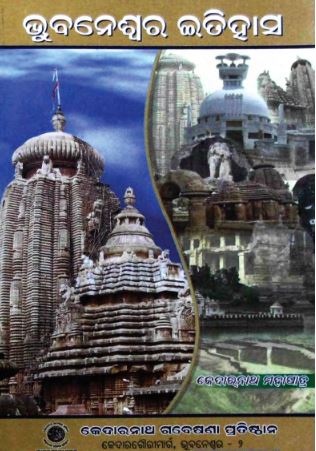Kedar Nath Mahapatra’s “Odia Essay Book Bhubaneswar Itihasa” published in 2018 is a comprehensive exploration of the history and culture of Bhubaneswar, the capital city of Odisha. The book delves into various aspects of Bhubaneswar’s rich heritage, including its significant historical events, architectural marvels, and religious influences.
One of the key themes explored in the book is the influence of Jainism and Buddhism on the cultural landscape of Bhubaneswar. The city has a long and storied history dating back to ancient times when it was a prominent center for both Jain and Buddhist philosophies. Mahapatra delves into the impact of these religions on the city’s architecture, art, and society, shedding light on the intricate intertwining of spiritual beliefs and cultural practices.
The presence of Jain and Buddhist monuments in Bhubaneswar is a testament to the city’s diverse religious heritage. The famous Khandagiri and Udayagiri caves, dating back to the 2nd century BC, are prime examples of Jain rock-cut architecture that showcase intricate carvings and inscriptions depicting the lives of Jain monks and the teachings of Mahavira. These caves serve as a reminder of Bhubaneswar’s deep-rooted connection to Jainism and its role as a center for spiritual enlightenment.
Similarly, Bhubaneswar’s Buddhist sites, such as the Dhauli Shanti Stupa and the Ratnagiri and Lalitgiri archaeological complexes, reflect the city’s embrace of Buddhist teachings and practices. These sites feature magnificent stupas, monasteries, and relics that highlight the city’s contribution to the spread of Buddhism in the region. Mahapatra’s exploration of these sites in his book provides readers with a nuanced understanding of the city’s role in shaping the religious landscape of ancient India.
The architectural splendor of Bhubaneswar is another focal point of Mahapatra’s book. The city is renowned for its impressive temples, with the Lingaraj Temple and the Mukteswar Temple among its most famous examples. These temples showcase exquisite carvings, intricate sculptures, and stunning architecture that reflect the city’s deep-rooted spiritual traditions and artistic prowess. Mahapatra’s detailed descriptions and analyses of these architectural wonders offer readers a deeper appreciation of Bhubaneswar’s artistic heritage and the skills of its craftsmen.
In conclusion, Kedar Nath Mahapatra’s “Odia Essay Book Bhubaneswar Itihasa” is a valuable resource for anyone interested in delving into the history and culture of Bhubaneswar. Through his exploration of Jain and Buddhist influences, architectural marvels, and historical events, Mahapatra brings to life the vibrant tapestry of Bhubaneswar’s past. His book serves as a tribute to the city’s rich heritage and a testament to its enduring legacy as a cradle of spiritual enlightenment and artistic excellence.
Books Info
| Books name | Bhubaneswar Itihasa/ଭୁବନେଶ୍ବର ଇତିହାସ |
| Editor | Indramani Sahoo, 1999 |
| No Of pages | 216 |
| Publisher | Kedarnath Gabeshana Pratisthana |
| Publication | 2018 |
| Printed At | Organic Press |
| Distributor | NA |

